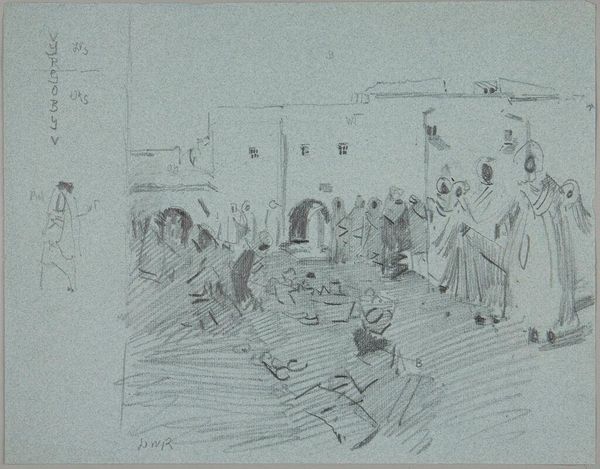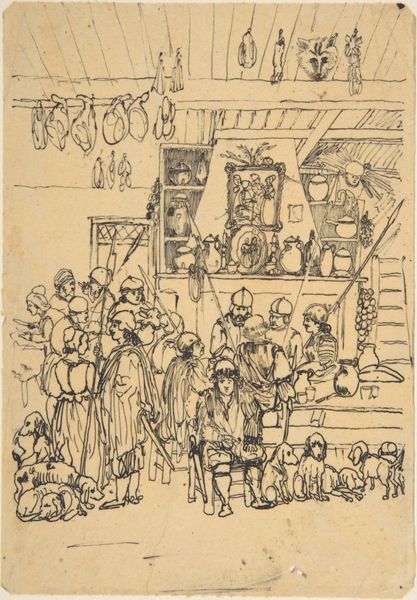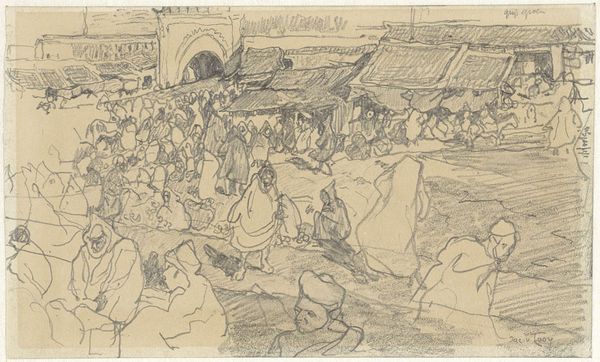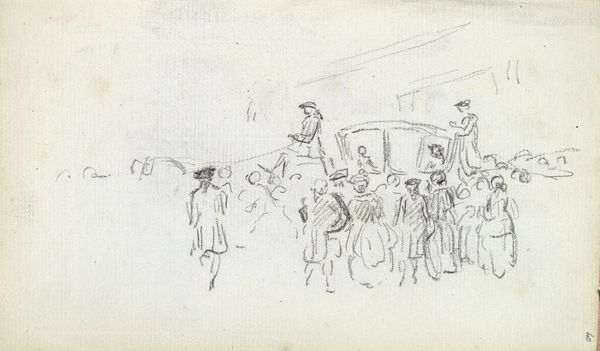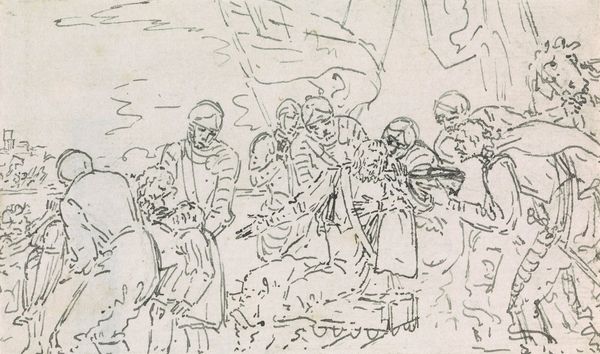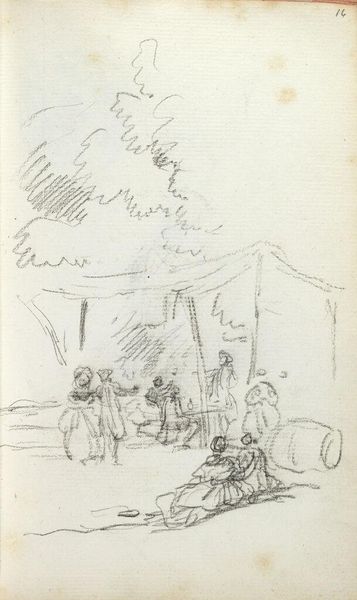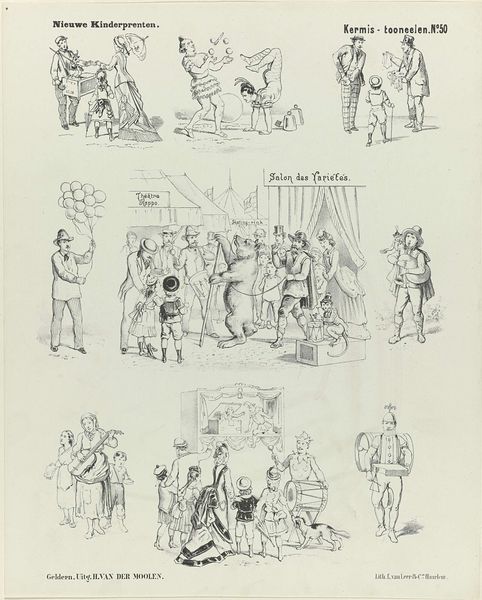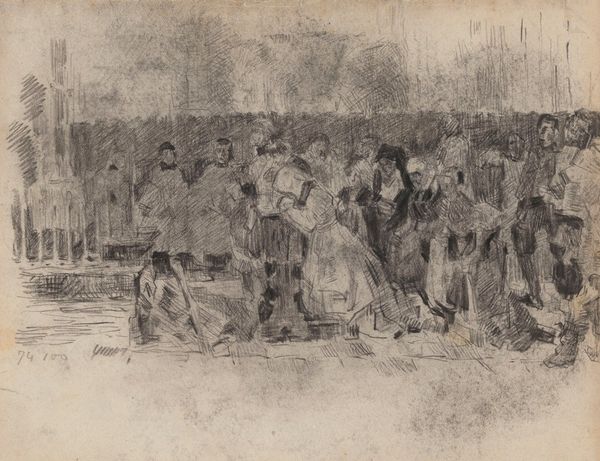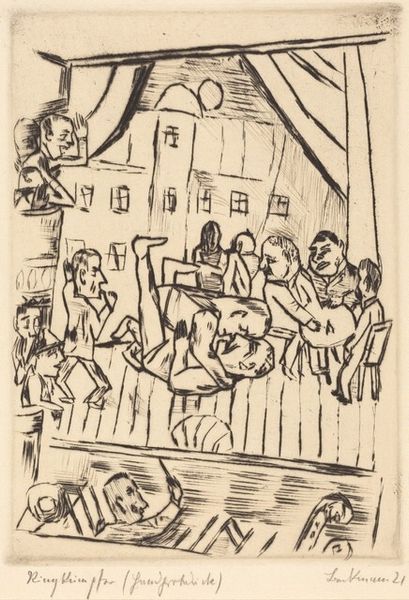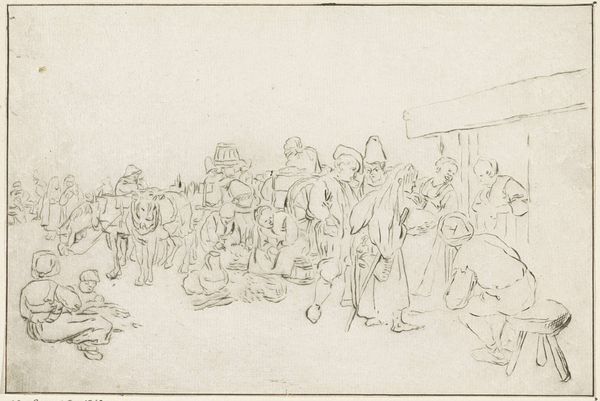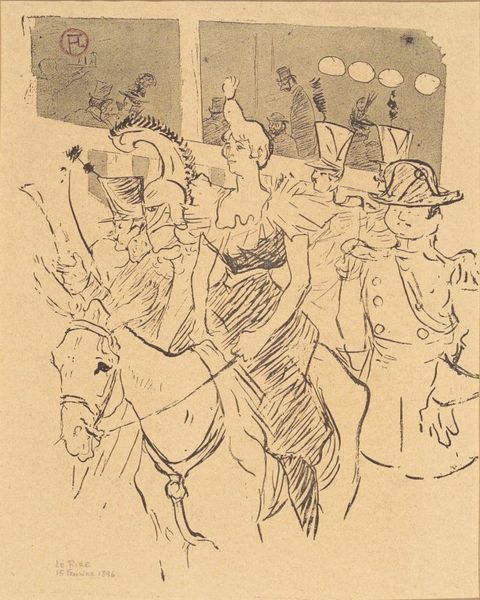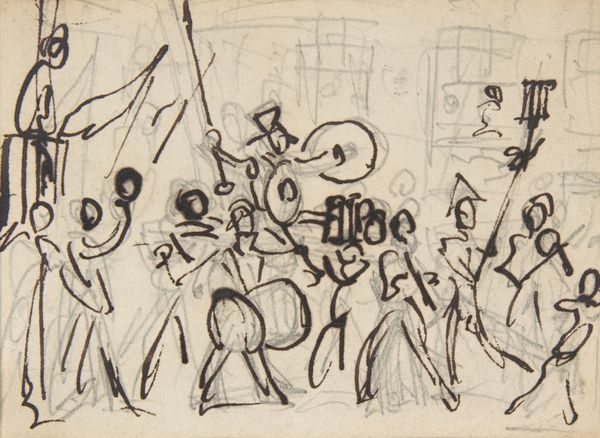
drawing, ink, pen
#
drawing
#
figuration
#
ink
#
line
#
russian-avant-garde
#
pen
#
genre-painting
#
realism
Copyright: Public domain
Curator: It's rare to encounter such rawness, wouldn't you agree? This drawing, "Court Pugacheva" by Vasily Perov, gives us a visceral reaction even today. Editor: Absolutely. It's the dynamism, I think. Pen and ink, deceptively simple materials, used to convey such chaotic movement. Look at how the artist sketched it, that roughness must mirror what they thought it might look like during a chaotic revolt, a quick hand needed. Curator: It’s intriguing how Perov utilizes line work alone to establish this genre painting scene, pulling from a collective historical awareness that is then manifested in this one space with these actions being taken by this rabble. I feel it references earlier struggles. What symbols do you discern? Editor: Symbolism takes a back seat for me here, but it's the production I want to get across. Given the frenzied energy, I wonder if this drawing was preparatory work—or, with the Russian avant-garde influence, a statement on immediacy, challenging what constitutes finished art, the use of drawing for socio-political ideas? Curator: Precisely. It feels charged, unsettling in a way, because we see it as part of a legacy. Those repeating figures in the back are rendered with the most hasty lines but suggest waves and waves of the uprising. How were ordinary people moved to uprise from everyday life? Editor: It highlights the material conditions that drove these actions and suggests, to me anyway, something revolutionary. Consider how it must have been made, with what kind of implements...the paper itself, perhaps something common and cheap? And that would affect how we view it now, in a world of disposable materials...it's precious for its message. Curator: I appreciate the work's evocative quality; that pen-and-ink medium feels particularly aligned with conveying both the urgency and potential consequences of societal upheaval, of revolution. The message reverberates beyond this one representation. Editor: It's been valuable looking past the scene’s representation itself to better think about this from the materiality it would have existed within and meant for people like it depicted. It prompts reflections on how our access to, and valuing of, materials shapes the narratives we build around art and labor itself.
Comments
No comments
Be the first to comment and join the conversation on the ultimate creative platform.
